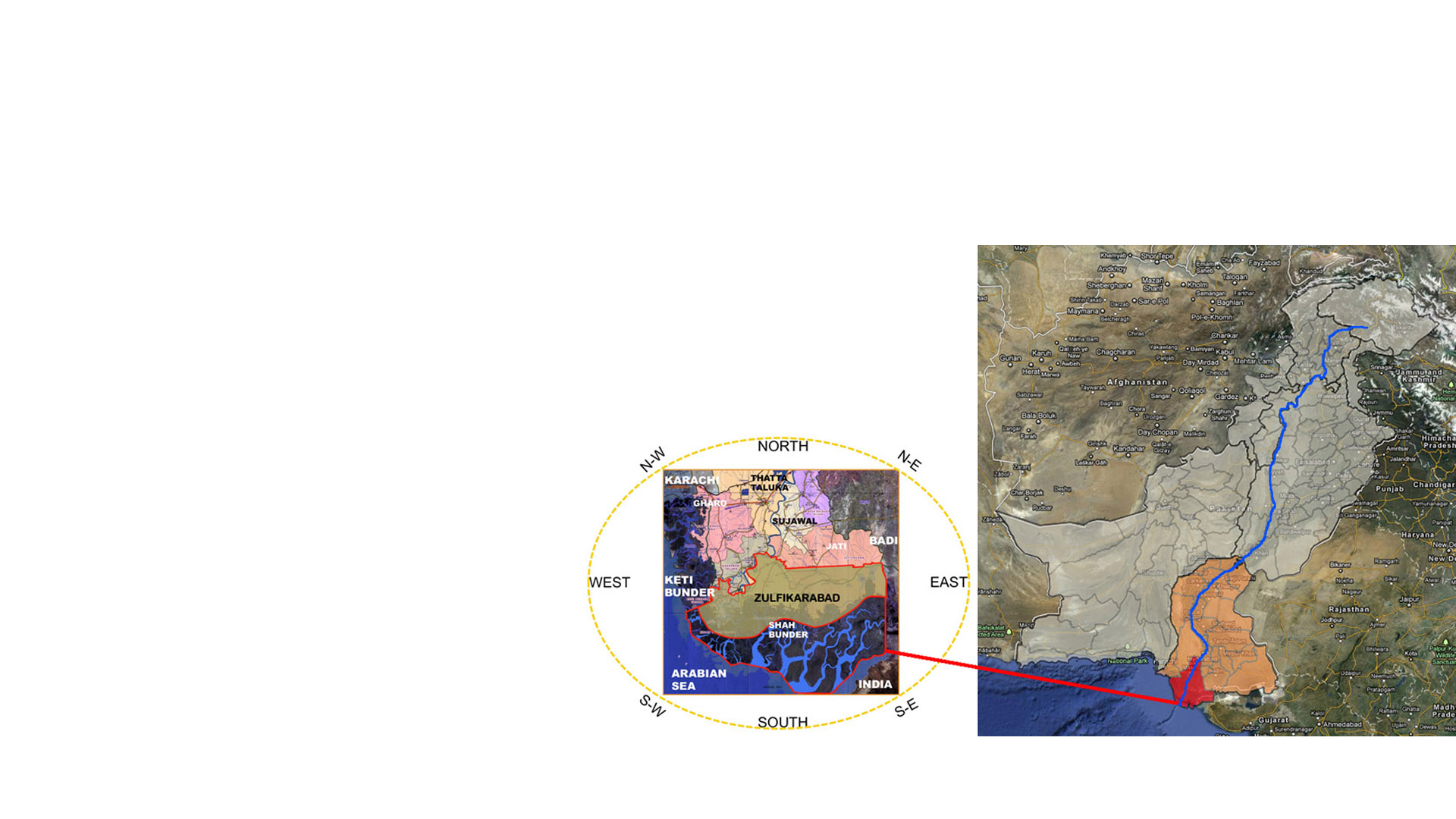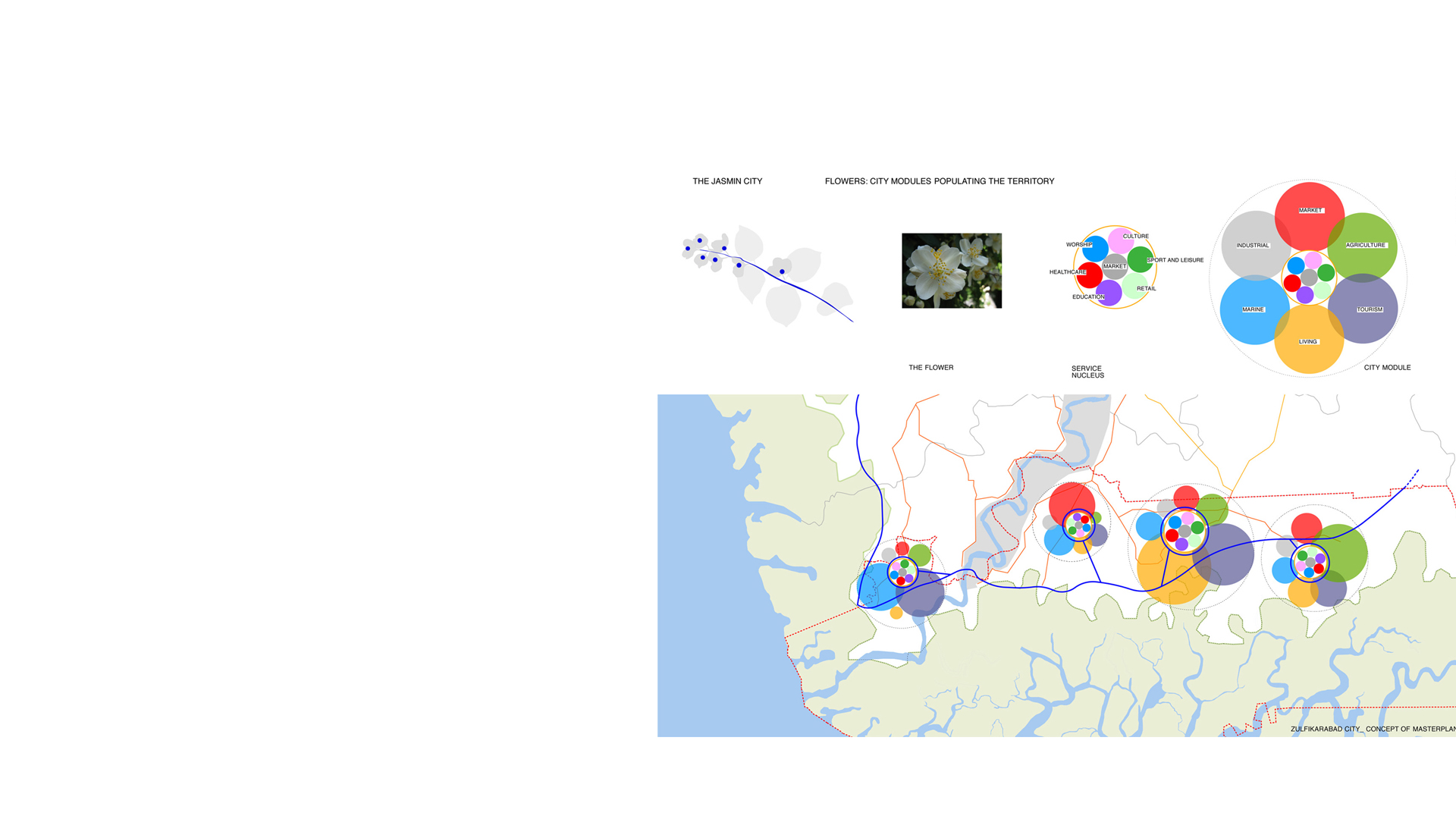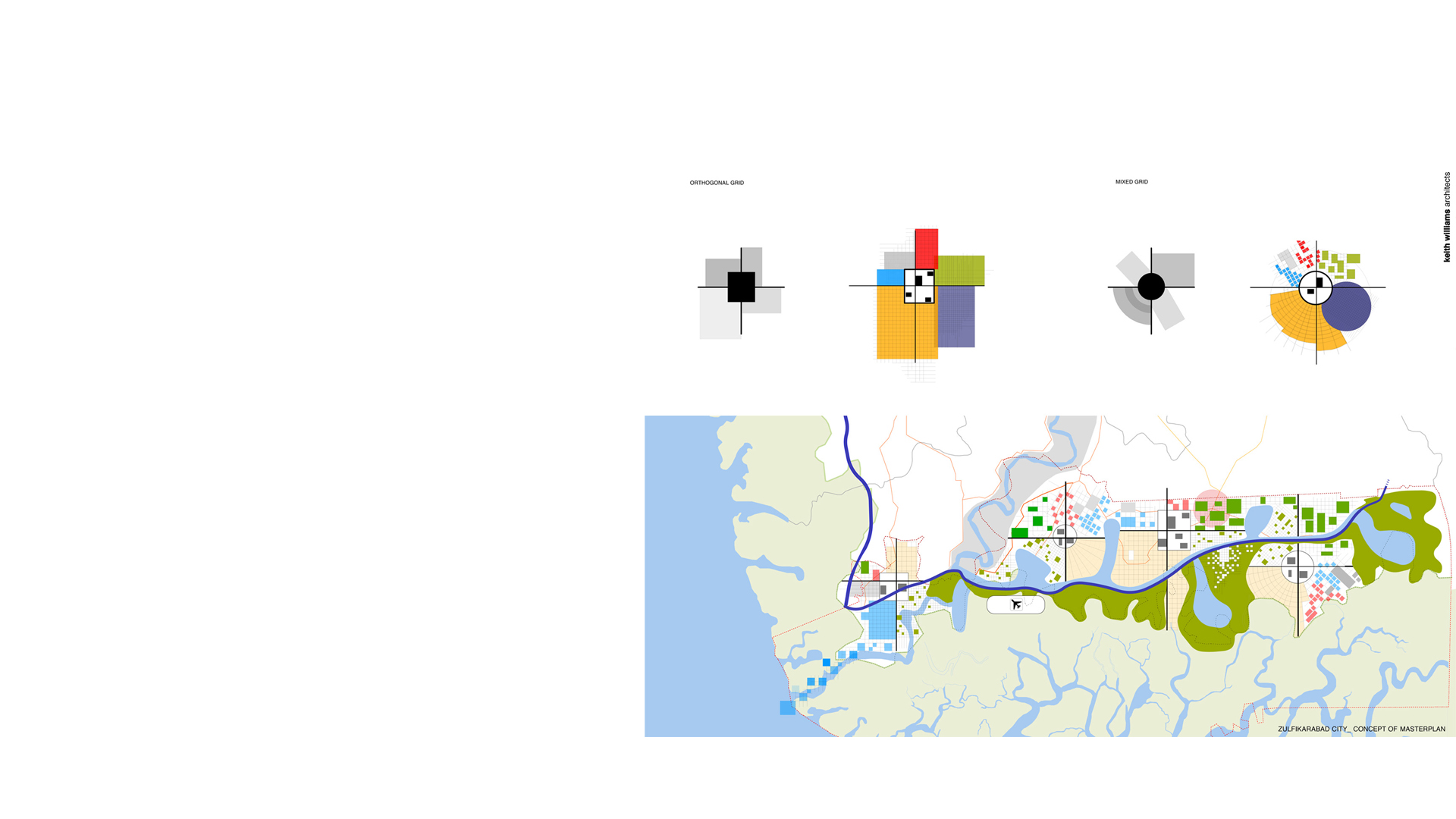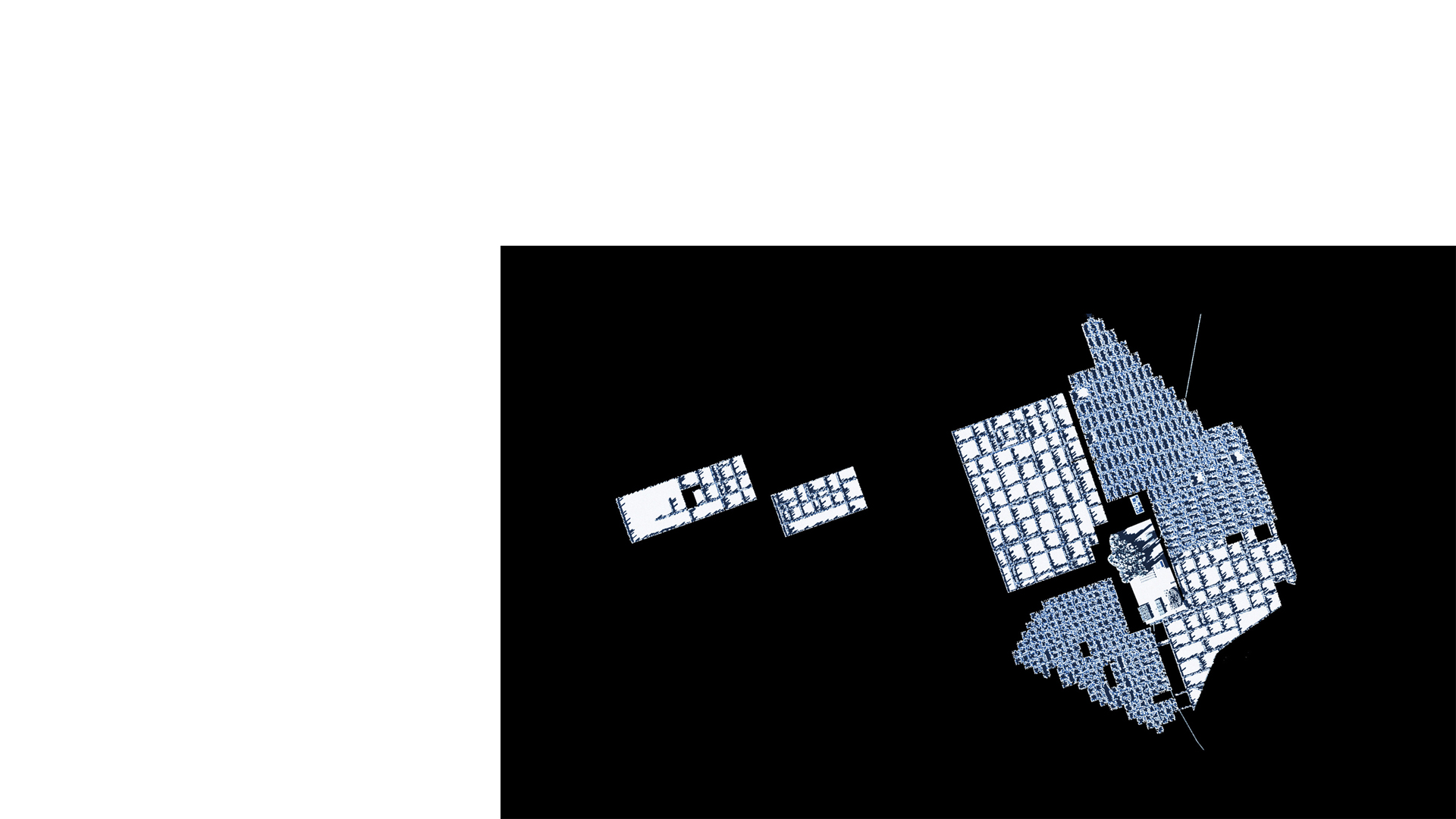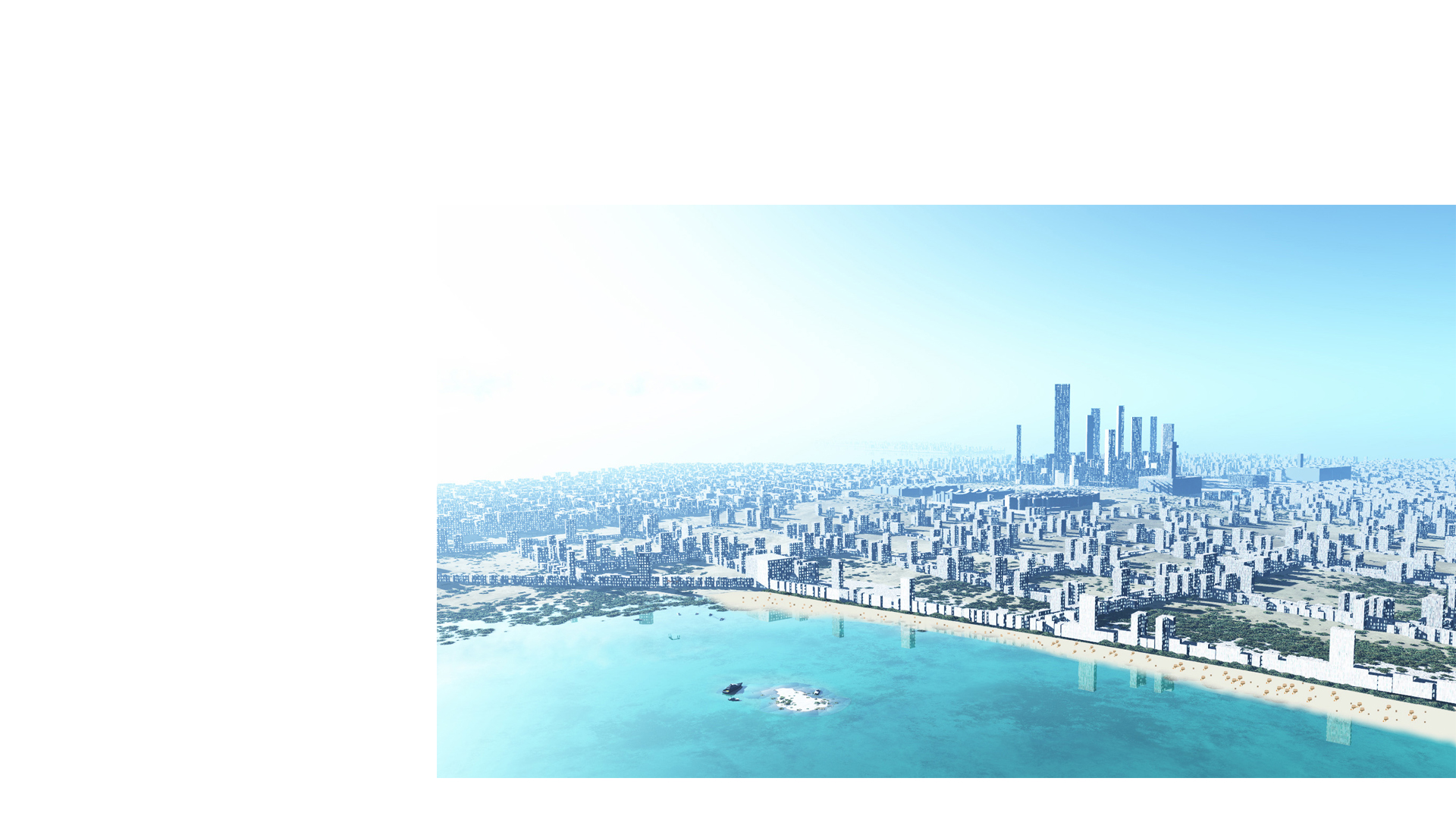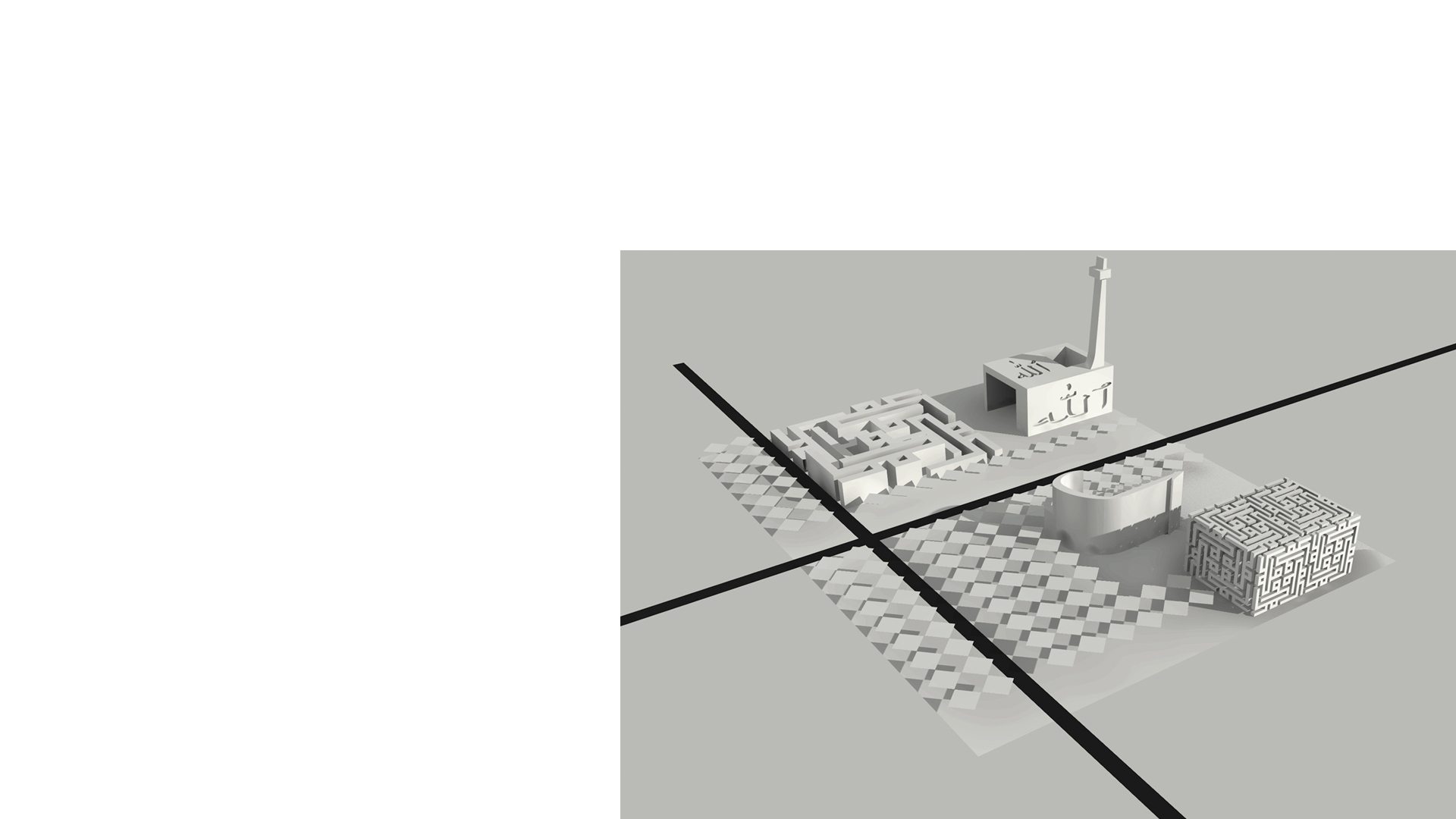

Keith Williams Architects were asked by the Government of Pakistan through the, Zulfurikabad Development Authority, to prepare proposals for the evolution of a new mega city in southern Pakistan to house a population of 10 million people. To deliver this vision Keith Williams Architects formed a key alliance with ESS-I-AAR, a respected local engineering concern, and formed a team of experts in the fields of civil engineering, hydrology, transport, waste management, demographics amongst others.
The new city of Zulfurikabad, located in Sindh Province, is a far-sighted vision to improve the living conditions of millions of people and relieve the pressure on the rapidly expanding nearby city of Karachi.
Sited at the mouth of the river Indus it is apparent that there is an opportunity to formulate a purposeful masterplan for the development of a city to accommodate a projected population over the next forty years whilst stabilising and restoring the delicate balance of the ecosystem in this area. Ensuring the development of an ecology responsive city that could develop and expand in an holistic way is core to Keith Williams Architects proposals.
Many technical challenges would have to be overcome to realise this project, particularly given the envisaged siting of the project perched as it is at the edge of the coast on very low lying land. Years of neglect towards the ecologically important mangrove areas along this coastline, including subverting the underlying water table that sustains it, has permitted saline water to permeate beneath, killing the mangrove. Lack of fresh drinking water is also driving the existing population out, giving rise to wasteland.
Our city plan is not conventional. Its principles are rooted in the history of Sindh and its forms flow from ancient planning of Islam cities. It is also rooted in the famous garden city movement from 19th century England, which has spawned world capitals such as Canberra. Our work takes these concepts and updates them for the 21st Century and beyond.
The vision for Zulfurikabad is analogous to a tree or plant – The Jasmine City – as Pakistan’s abundant national flower with roots, veins and arteries and branches, buds and flowers growing organically over time. A green necklace – sitting gently upon the hard areas of land with its stems providing the arteries of the city, its transport, water, and woodland feeding its buildings, public spaces and parks.
Our proposals aim to rectify these problems with long term strategic solutions to positively foster the local ecosystem whilst permitting the large scale of development envisaged. Effective management of the waters of the Indus and the flood waters effecting the central spine of the country would play a key role in these solutions.
The transport, power and waste management strategies have been formulated to be realistic whilst still seeking to engage with new and innovative technologies synonymous with an advanced “ecocity”. Therefore power generation through solar, wave, tide, wind and short drop hydro will all have a role to play in supporting the city. An effective policy on minimising waste and effective recycling would be put in place accordingly.
Efficient public transport and the restriction of wasteful car usage will enable a mobile workforce without over burdening of the air quality through pollution.
The new city it is intended to foster a sense of tolerance and goodwill which can be assisted by the quality of design of the public realm. Provision of advanced healthcare and exceptional places of learning will provide for the future generations who will shape the nation. These facilities are located to be accessible to all and integrated into the core conception of the planning of the city at a very specific level.
The notion that a node or “seed” could be established that would provide the core essentials of a “livable” city that would sustain the homes and workplaces of the population potentially allows the development of the city in an organic but managed way. Several smaller scale nodes would develop to be interdependent and form a larger city whole. Careful structuring of the city planning regulations would ensure this was carried out in a flexible but controlled manner to prevent urban sprawl and create a strong “sense of place”

